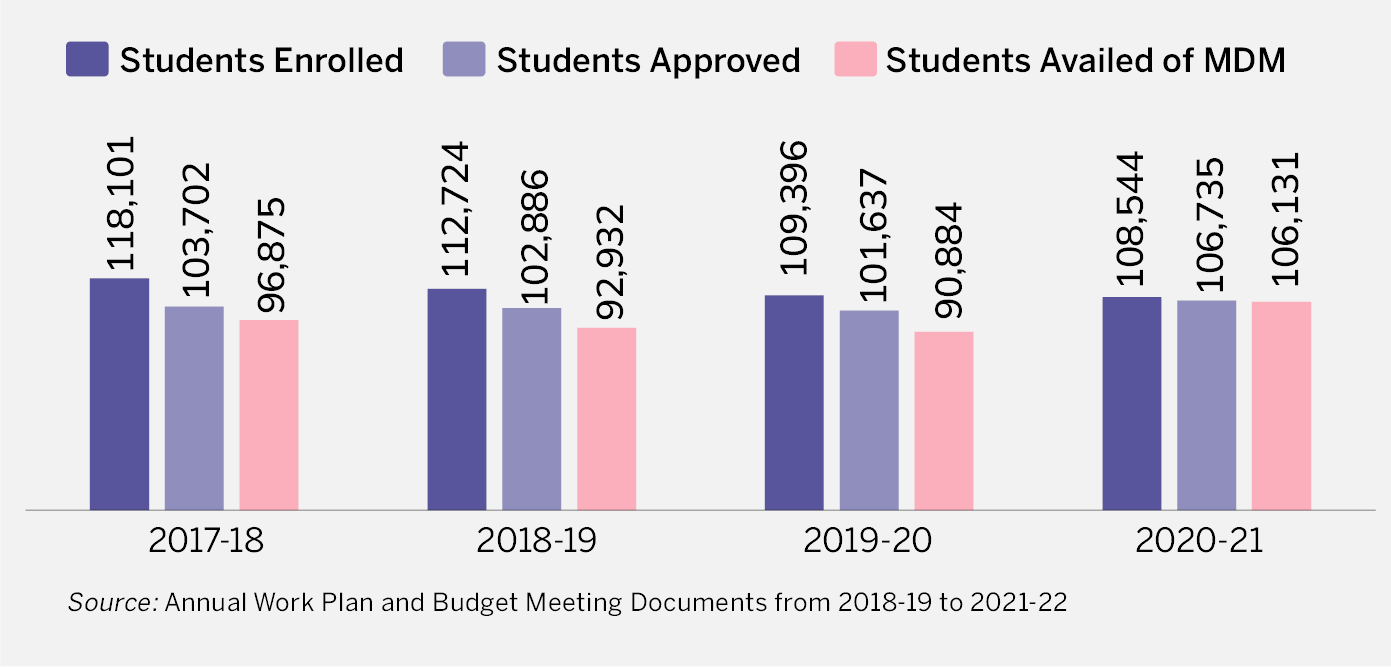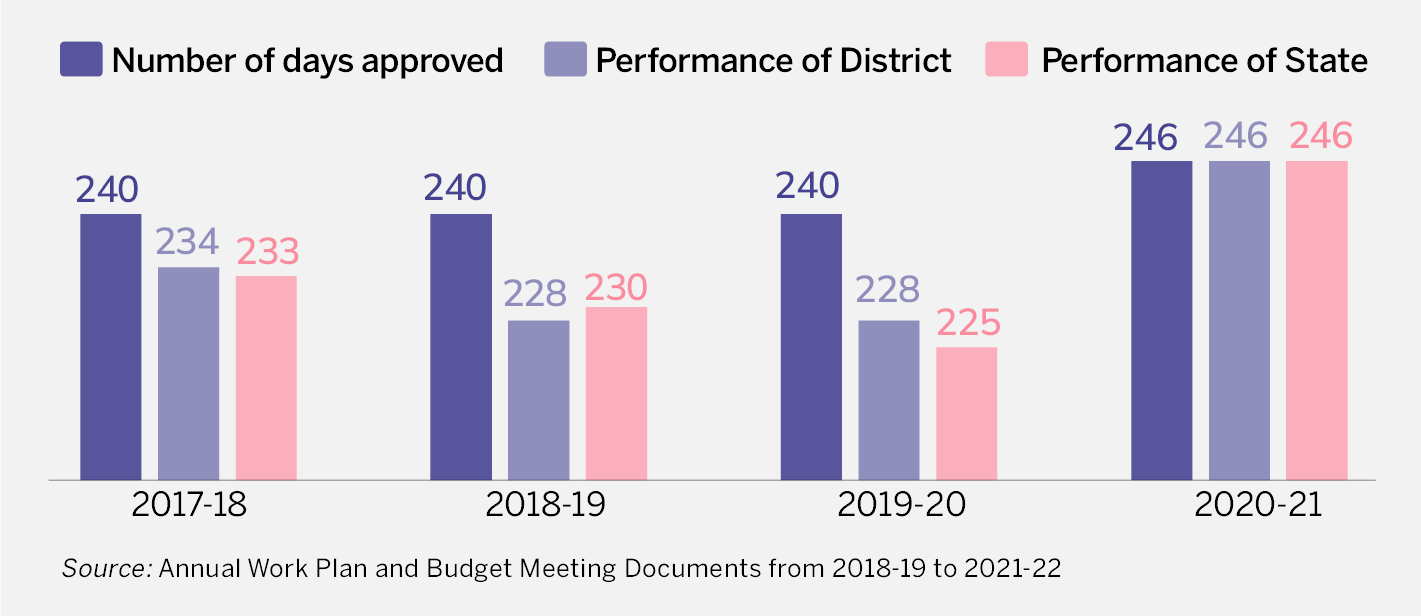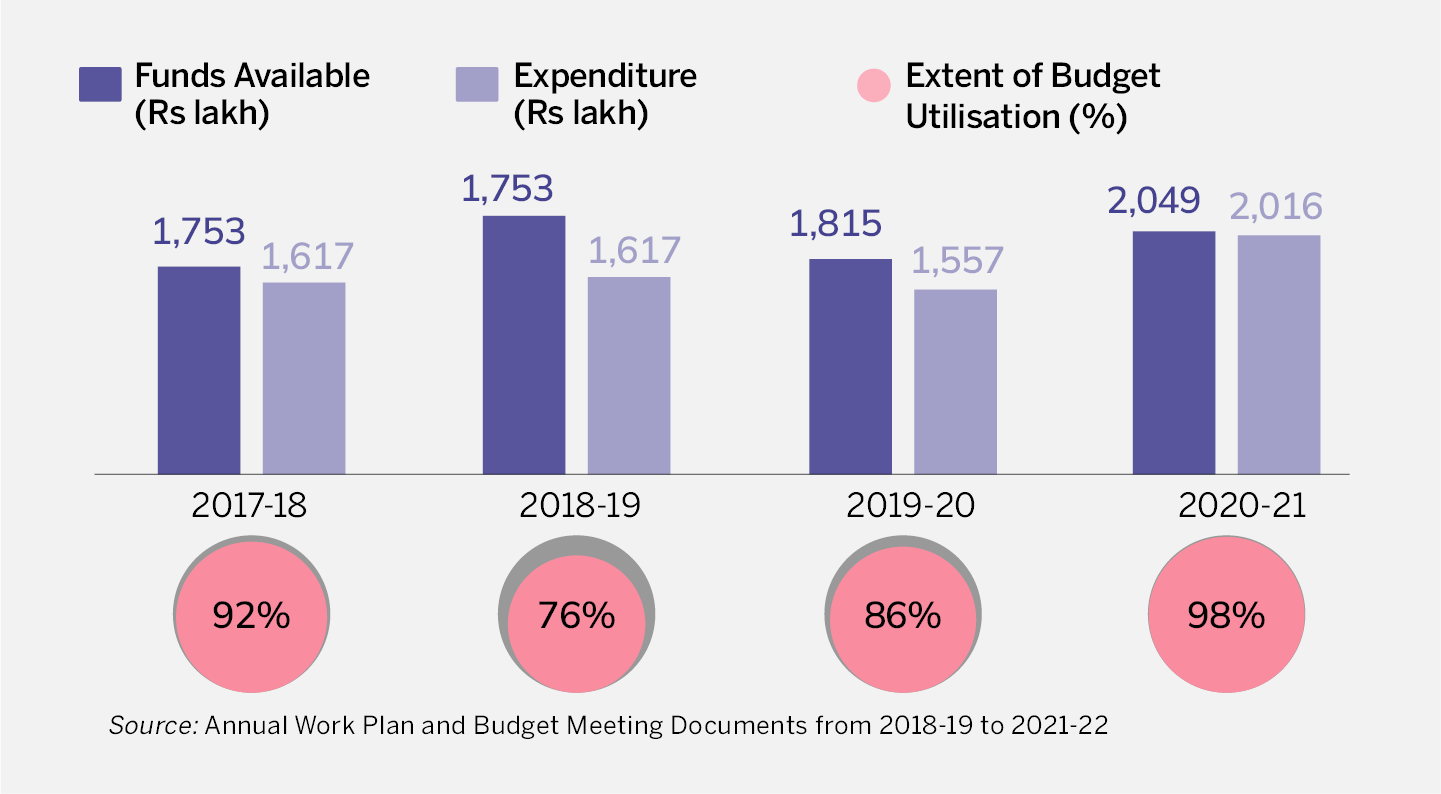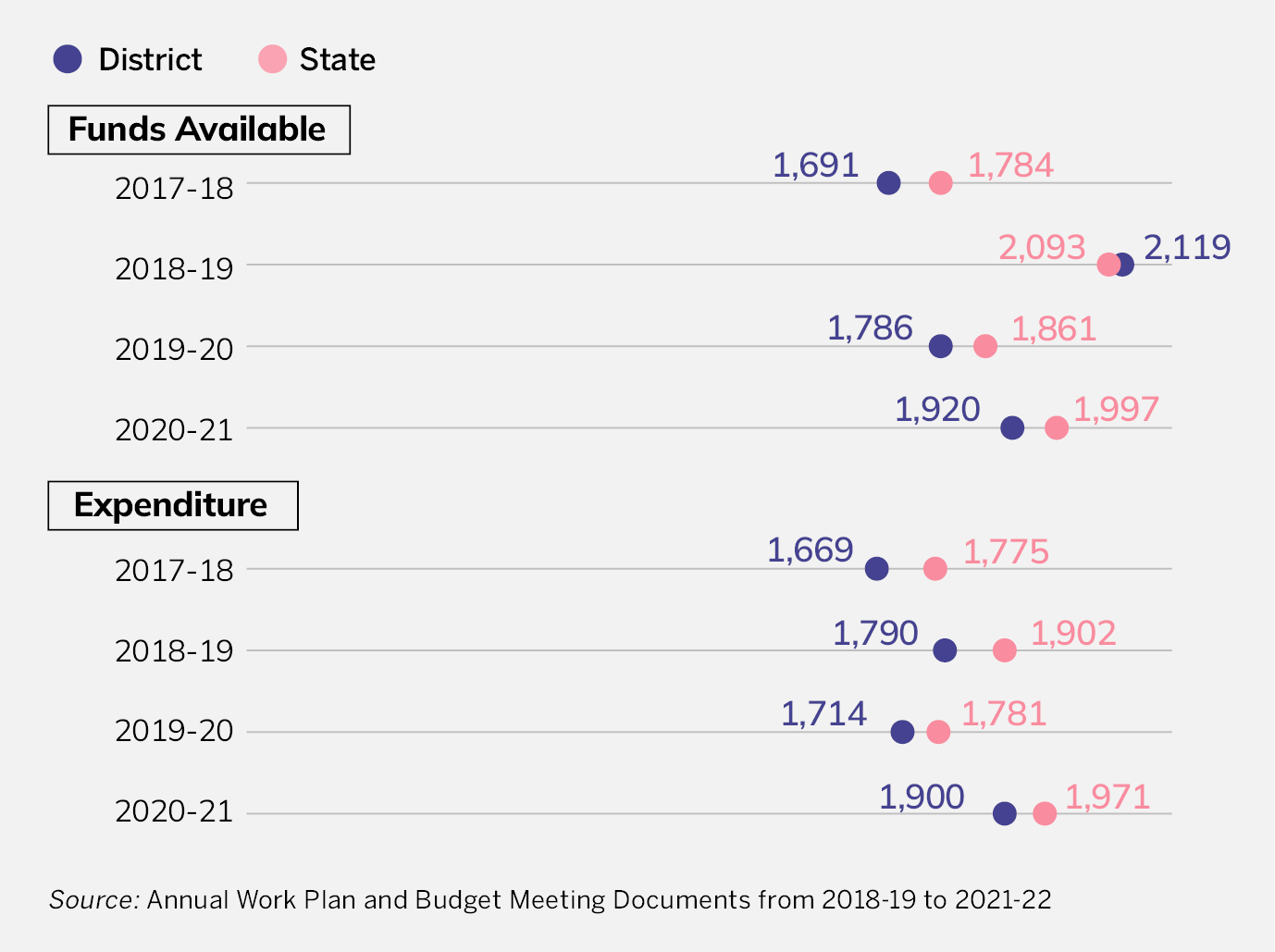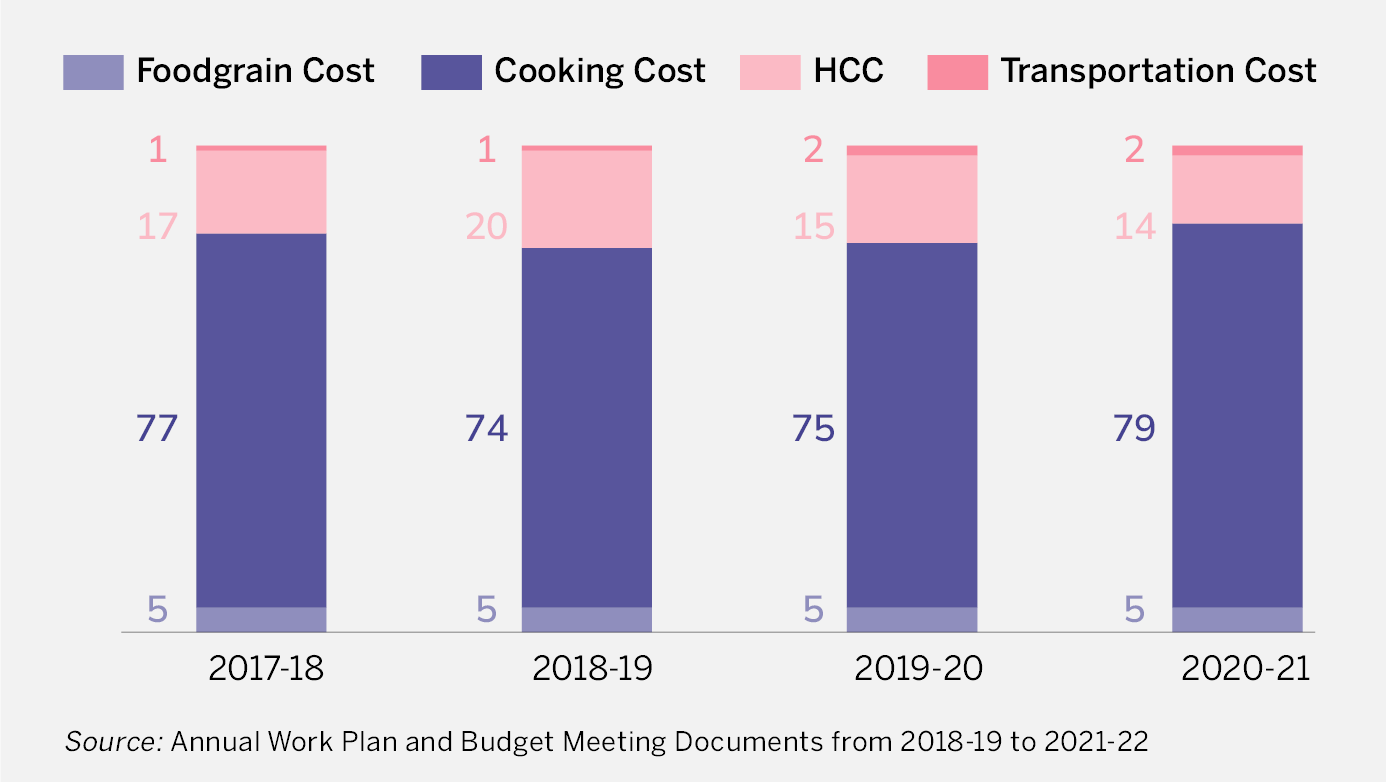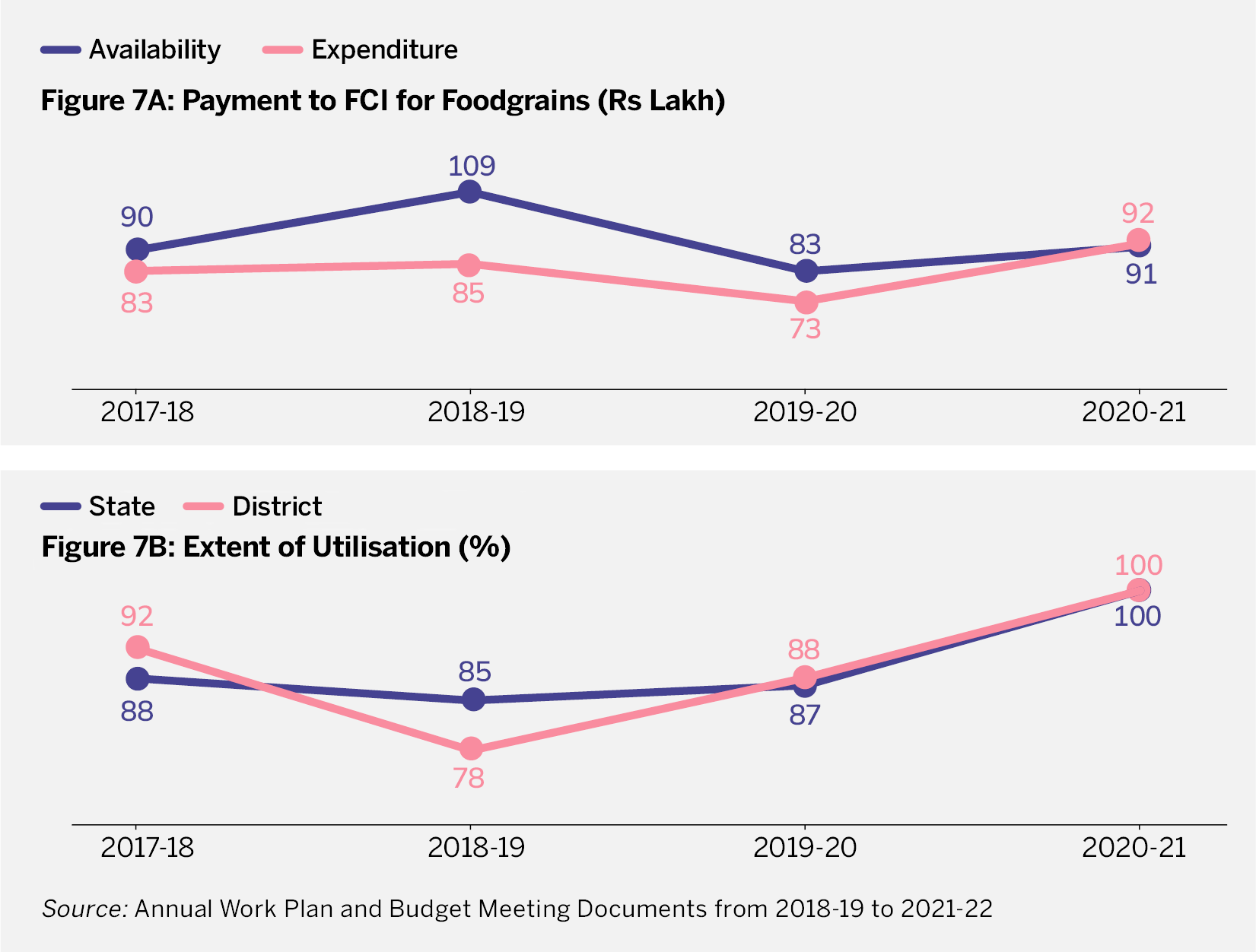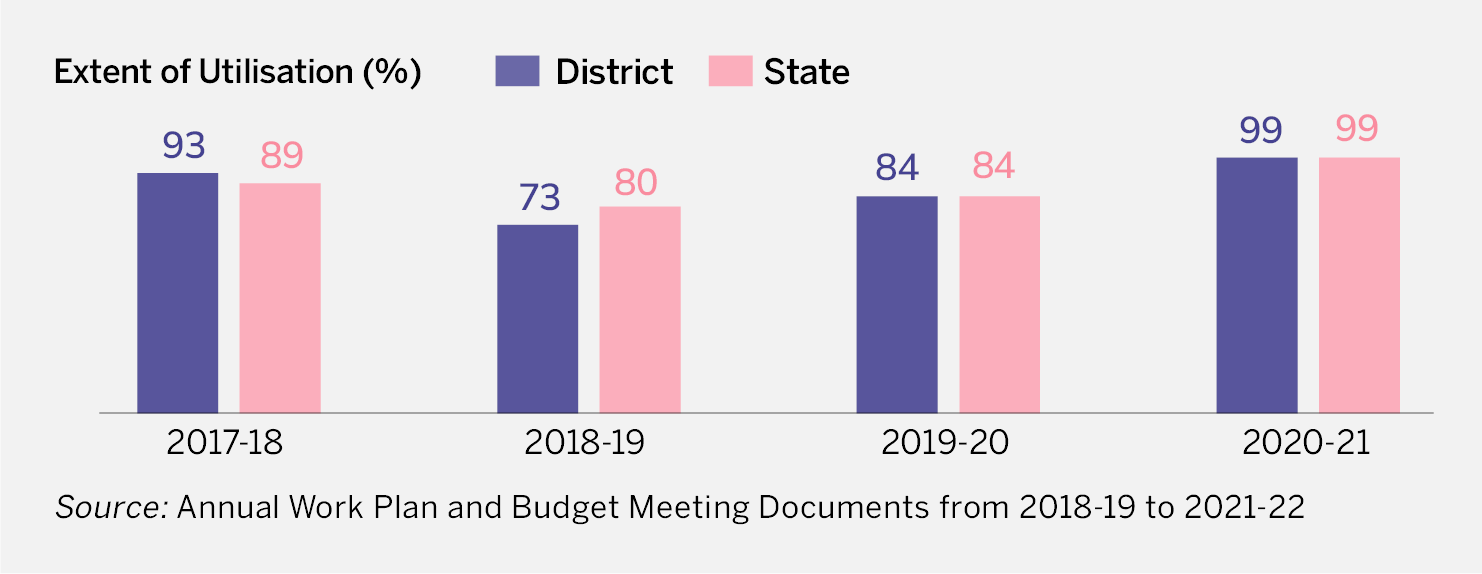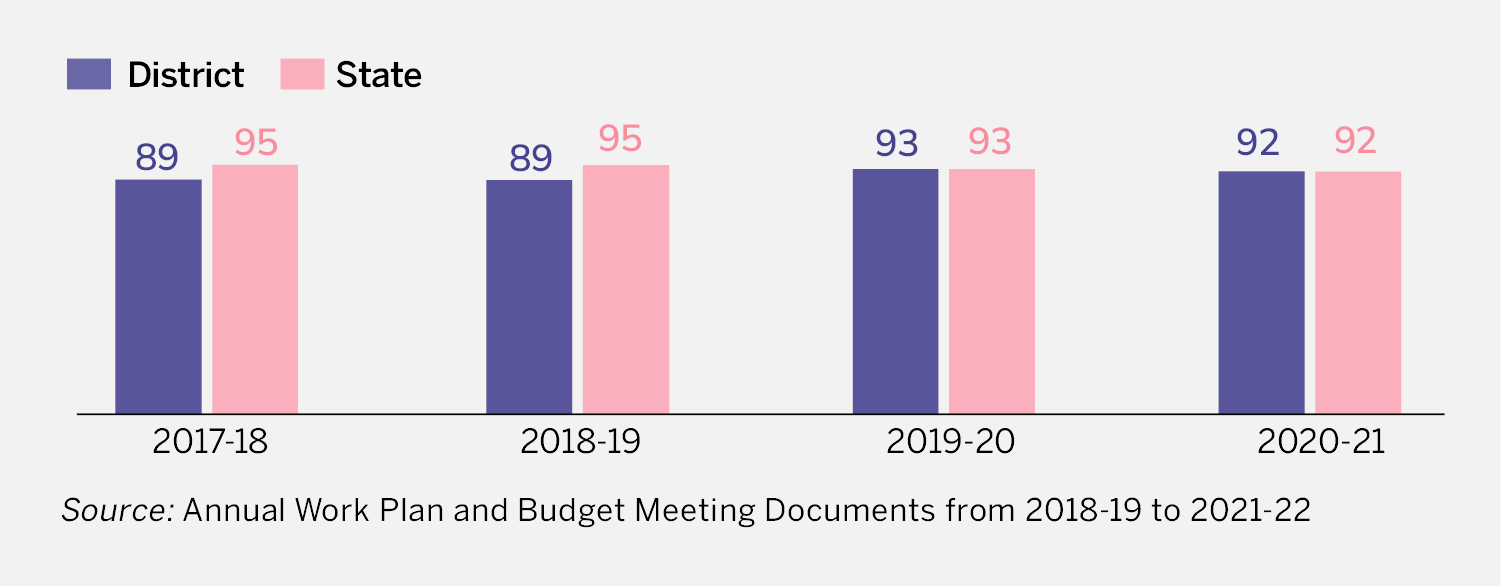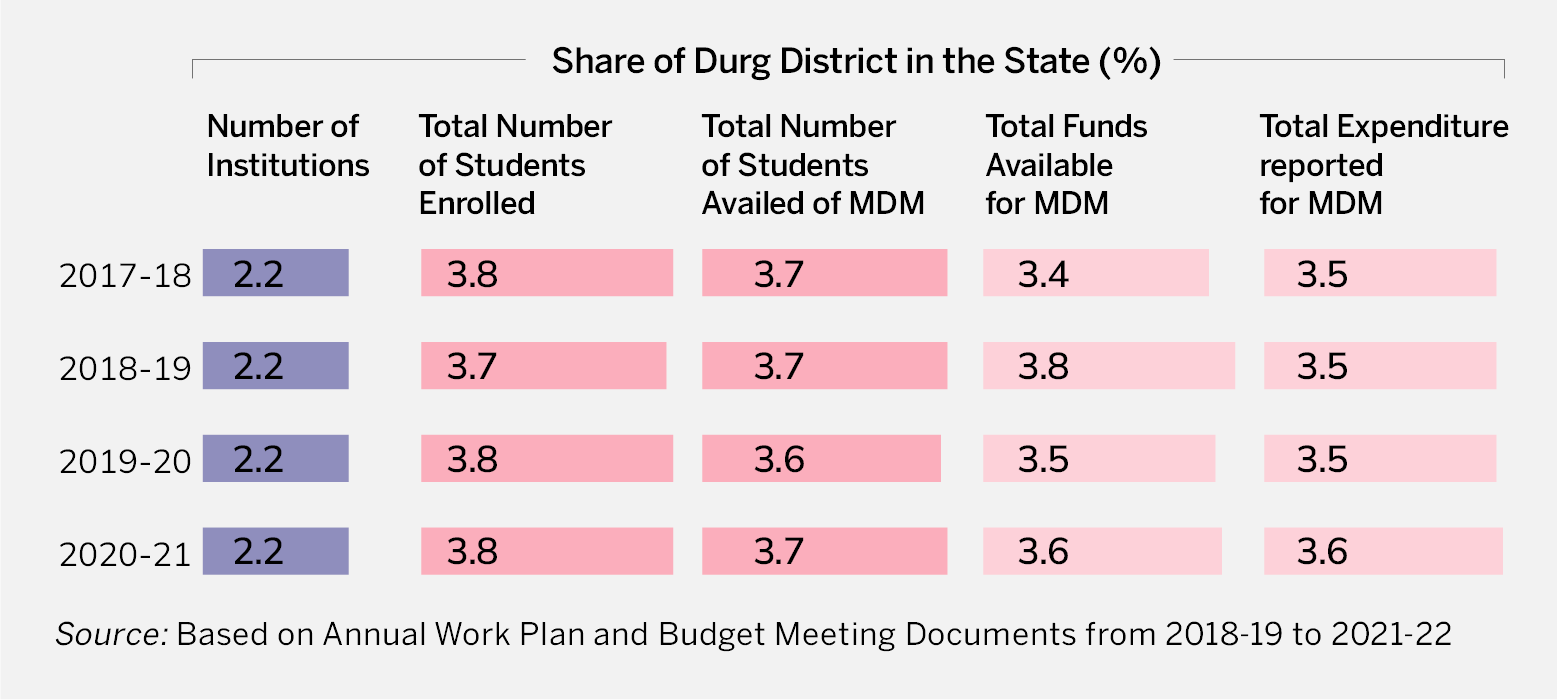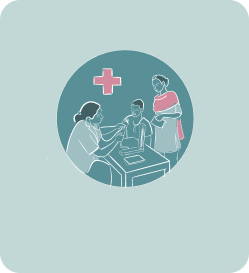01.
Has MDM helped in increasing the enrolment of students in the district?
Section titled Has MDM helped in increasing the enrolment of students in the district?One of the objectives of the Scheme is to increase the enrolment of students. Figure 1 presents the combined enrolment in primary and upper primary classes in schools that provide MDM.
Figure 1: Number of Students Enrolled for MM
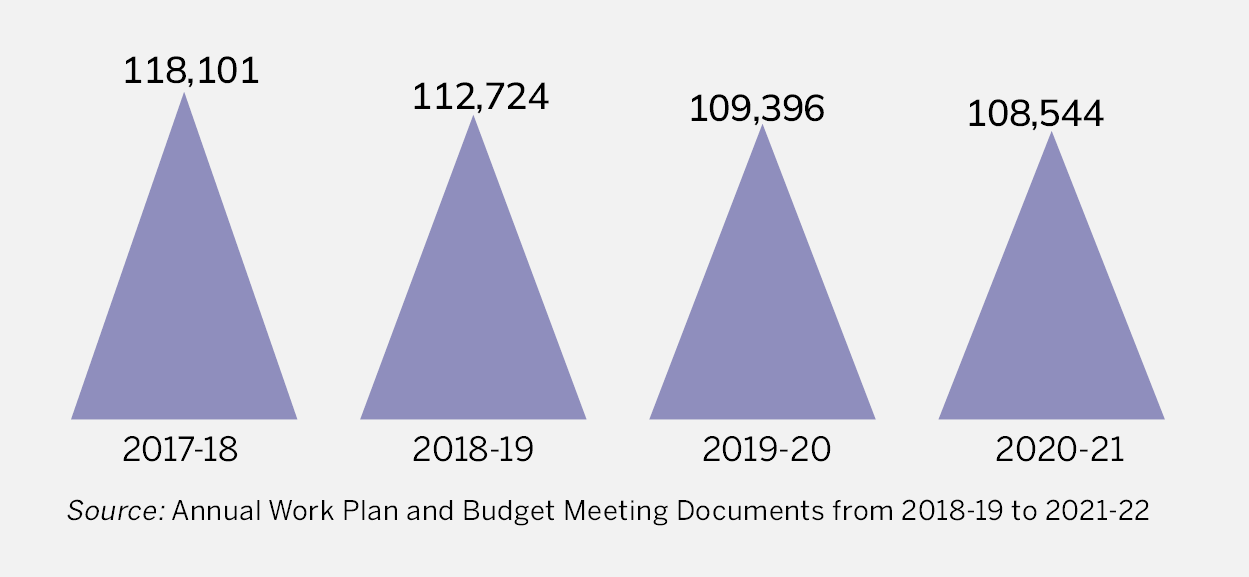
- In contrast to the scheme’s objective, the number of students enrolled seen a decline in Durg district during the four-year period analysed. However, the state also reported a decline in the enrolment of students during this period.
- The overall decline of enrolment is reported to be 8 %. Enrolment declined more in the upper primary section (12%) compared to primary classes (5%).
- While a part of the decrease in 2020-21 was on account of the Covid-19 pandemic, the decline had started even before that.
- Most educationists were of the view that in many government schools, owing to a shortage of study materials, engagement of teachers in other work, as well as for other reasons, parents enroll their children in private schools.
- Due to decline in enrolment many schools merged with other schools or are closed by authorities as it is not economically viable to run them.
